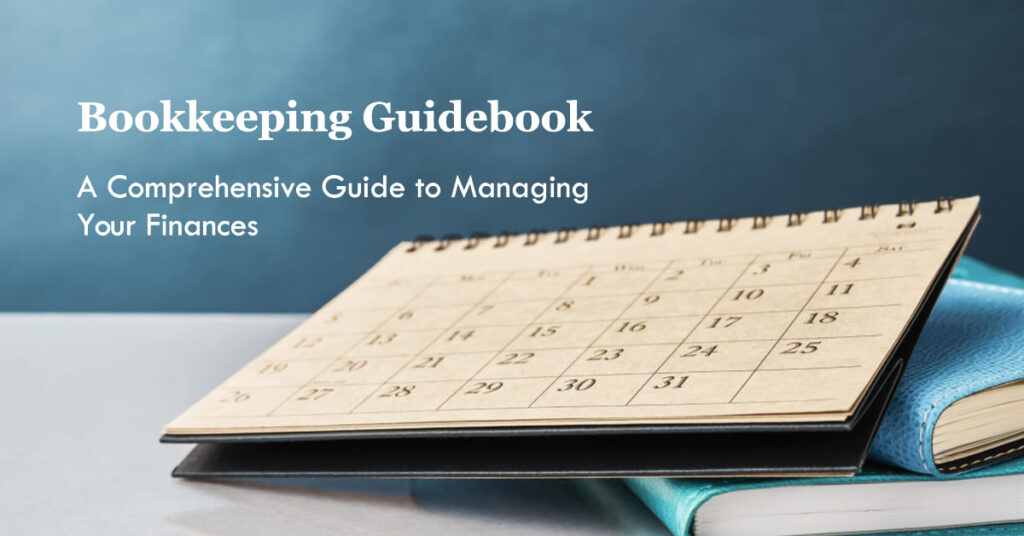Bookkeeping Guidebook
A bookkeeping guidebook is the process of recording and organizing the financial transactions of a business. It is essential for maintaining accurate financial records, making informed business decisions, and meeting legal requirements. This guidebook provides an overview of key concepts and practices in bookkeeping.
Understand Bookkeeping:

A Bookkeeping guidebook involves tracking and documenting financial transactions such as sales, expenses, purchases, and payments. It helps businesses keep a clear record of their financial activities, enabling them to assess profitability and manage their finances effectively.
Chart of Accounts:
Create a chart of accounts, which is a categorized list of all the accounts used to record transactions. Common account categories include assets, liabilities, equity, income, and expenses. Each account is assigned a unique number for easy reference.
Double-Entry System:
The bookkeeping guidebook follows the double-entry system, which ensures that every transaction has an equal and opposite effect on at least two accounts. For instance, if you receive cash from a customer, you would debit the cash account (increase) and credit the accounts receivable account (decrease).
Recording Transactions:

Record all financial transactions in a journal or general ledger. The journal is a chronological record of transactions, while the general ledger is a collection of accounts that shows the balances of each account. Transactions should be recorded promptly and accurately to maintain the integrity of the financial data.
Debits and Credits:
Understand the fundamental principle of debits and credits. Debits are recorded on the left side of an account and represent increases in assets and expenses or decreases in liabilities and equity. Credits are recorded on the right side of an account and represent decreases in assets and expenses or increases in liabilities and equity.
Cash vs. Accrual Basis:
Decide whether to use the cash or accrual basis of accounting. The cash basis records transactions when cash is received or paid, while the accrual basis records transactions when they occur, regardless of cash flow. The choice depends on factors such as business size, nature, and legal requirements.
Financial Statements:
Prepare financial statements at regular intervals to assess the financial health of your business. The key statements are the income statement (shows revenue, expenses, and net income/loss), balance sheet (displays assets, liabilities, and equity), and cash flow statement (details cash inflows and outflows).
Reconciliations:
Perform regular bank reconciliations to ensure that your records match the bank’s records. This involves comparing your transactions with the bank statement and identifying any discrepancies. Reconciling accounts helps detect errors, fraud, or missing transactions.
Periodic Reviews:
Review your financial records periodically to identify trends, spot errors, and make informed decisions. Regularly analyze your financial statements, review outstanding invoices, and assess your cash flow. These reviews enable you to address issues promptly and take proactive steps to improve your financial position.
Software and Automation:

Consider using accounting software to streamline your bookkeeping process. Numerous software options automate calculations, generate reports, and provide real-time financial insights. Accounting software can save time, reduce errors, and facilitate the organization and analysis of financial data.
Remember, accuracy and attention to detail are crucial in bookkeeping. If you are uncertain about any aspect of bookkeeping, consult with a professional accountant to ensure compliance with accounting standards and best practices.
In summary, a bookkeeping guidebook is an essential function of any business. It involves recording and organizing financial transactions, following the double-entry system, and maintaining accurate records. By understanding the fundamentals of bookkeeping, using appropriate software, and conducting regular reviews, you can effectively manage your business’s finances and make informed decisions.
To Sum Up:-
In conclusion, a bookkeeping guidebook serves as a valuable resource for individuals and businesses looking to understand and implement effective bookkeeping practices. The guidebook provides comprehensive information and instructions on various aspects of bookkeeping, including recording financial transactions, maintaining accurate records, preparing financial statements, and ensuring compliance with tax regulations.
By following a bookkeeping guidebook, individuals can learn the fundamental principles of bookkeeping, such as double-entry accounting, a chart of accounts, and the importance of reconciling accounts. It offers step-by-step instructions and practical examples to help readers navigate through the bookkeeping process with ease.
Moreover, a bookkeeping guidebook often covers topics like budgeting, expense tracking, and financial analysis, enabling individuals and businesses to gain better control over their finances and make informed decisions based on accurate financial data. It may also provide insights into tax preparation and compliance, ensuring that financial records are in line with applicable tax laws and regulations.
Overall, a bookkeeping guidebook serves as an indispensable tool for those looking to establish and maintain a strong foundation in bookkeeping practices. It equips readers with the knowledge and skills needed to organize and manage their financial records effectively, leading to improved financial management, enhanced decision-making, and increased overall success in personal or business endeavors.



